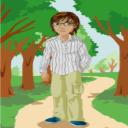Yahoo Answers is shutting down on May 4th, 2021 (Eastern Time) and beginning April 20th, 2021 (Eastern Time) the Yahoo Answers website will be in read-only mode. There will be no changes to other Yahoo properties or services, or your Yahoo account. You can find more information about the Yahoo Answers shutdown and how to download your data on this help page.
Trending News
tensing muscles, breathing techniques, and power?
i know for sure that there is benefit in striking and breathing slow or hard to enhance power. i also notice that okinawan karate styles sway and shift weight mostly from the midsection to enhance power. Uechi ryu uses the tensing of muscles to enhance power. xingyiquan uses the tensing motion and has a unique way of striking where the person retracts like a rubber band or stomps to create power. whats your take on using these techniques to create power and how do you use momentum? how do you generate power? whats the most effective way to use less motion but create power and efficiency
great answers everyone ...
7 Answers
- Jas KeyLv 610 years agoFavorite Answer
Power generation... There are multiple ways to do it, and different purpose for each one.
Most people mistake the martial arts power measure to be F=MA.(which actually only calculates how much energy you wasted on that technique) But in reality it is P=MV.(Building of momentum) It's about how much momentum you can build and then transfer into your opponent.
Boxing uses mostly rotation of the core generate power. They use the legs to push the torso into a spin, and the torso pushes the shoulder that pushes the momentum into the fist. Which then connects it's target and transfers the momentum. That is the case with the straight. The hook is same, exept the shoulder pulls the rest of the arm into a circular strike. The counter is made by dodging while having a solid base for the opponent to run into. It's pretty much like running yourself straight into the point of a grounded pole. Even though pole doesn't have any momentum, your own momentum hurts you.
Judo uses mostly the squating motions and leaning for power geration. For example hip throw is done by squating low, rotate while leaning forward (pulling the weight of the opponent on to your hip), and standing from the squat as you finish the leaning rotation. And the o-soto gari is done by leaning the opponents weight on to one leg and then lean farther by sweeping and lifting the weight loaded leg up with your own leg.
Xing Yi Quan uses mostly the step forward, shrinking and exploding expansion, and drop weight pulling. For Pi Quan you see the first part where the weight is dropped as the opponent is being pulled in. The dropping of the weight is where the power is generated and pulling is action that the power is going to. In this movement you also see the shrinking into a tight small figure. (This movment is more pronouced in the more ancient dai xin yi, where there is special monkey... something exercise for it) Then you explode and expand into a drilling form striking the opponent that was forcefully pulled in earlier. Then there is the final step forward Pi Quan to finish the form. Pi quan is the best way to show these power generations, but it is every where in Xing Yi Quan.
There are many more ways to generate power in all different styles. Like bajiquan and their stomping before using the recoiling energy to launch themselves into attack, TKD's chambering to make kicks even faster, and so on so forth. I think it's actually sad that a lot of MMA people are claiming that they are the best and all other styles should be gotten rid of, because there is a lot from different styles that could be learned.
Oh, the breathing thing. breathing out fast condenses the torso muscles. Condensed muscles is very good conductor for momentum, and it's good for creating turning energy as well.
Source(s): Train in MMA - 10 years ago
Good question and I have observed a few things in my 40+ years of doing martial arts. Let me start off by first saying that a car going just five miles per hour and moving only a little can break your leg. This is a good analogy with using your hips to generate power while also breathing out on punches and kicks and your hips only have to be coordinated with the punch or kick so that the power of that and the hips gets there at the same time adding momentum and more strength to the techniques. The hips only have to move a little just like that car and the its the coordinated action along with the momentum generated that really generates the power.
Some strikes are a little different in that all the power is at the end of the technique much like a whip or a towel being snapped and a back-fist is a good example of this I think. It is the speed with which you can generate the strike and making good, solid contact with the back of the first two knuckles and making contact at the end where you can generate the most power.
There is also a concept called shortening your technique and when punching you can generate as much power closer in as if you were further away and punching at full extension. This is done by tensing as well as use of the hips and also drawing power up from the floor and your legs while not extending the arm all the way into the punch but instead only four inches into the surface. This is very handy when infighting and throwing hooks while also using your hips.
You can also accentuate the power in uppercuts and upward elbow strikes by arching your back slightly and another way to generate more power in knee strikes is by pushing off with your toes and ball of your foot and then pointing the toes as you complete the action instead of lifting your leg which is a slower motion.
- YmirLv 610 years ago
Gravity pulling on you body generates the most power because it is a constant 9.8 m/s/s acceleration.
F=MA and impulse equals total force over time interval. Human muscles can only accelerate quickly for a few micro seconds. Then the muscle reaches its extension and it can't accelerate any more. When using gravity to fuel kicks, such as stomping down and then striking just before your foot lands, one powers strikes using the planet's gravity well. This is generally called rooting and other similar names.
The other issue is force reflection. A great force will push you as well as the target away. Internal structure allows you to prevent reflection of force from your strike, by reflecting the target's reflection back into him. So a strike on the enemy will impart some force, but some force will also flow back into your arm and try to move you backwards. If you move, that force is lost and dissipated. If you don't move, that force is resisted and forced to go back into its target, doubling or trippling the effective transfered force.
There are also other physics equations such as surface area ones that can be used to calculate effective transfered force from total force. Even if you don't have much power, if your surface area is the size of a needle's sharp point, you can penetrate flesh and tissue with far less power than you might need otherwise require.
I forgot the rest but if I remember, I'll edit this answer.
- Darth ScandalousLv 710 years ago
Not Xingyi.
It is an Internal Art - no muscle tension used at all. Wherever you read or heard that from is totally wrong information. Not a reliable source.
I trained in Sun Style Xingyi.
The "rubber band" concept you mentioned is Fajing. The Chinese Character for Fajing - "fa" consist of two parts. One part is a Bow, as in a Bow and Arrow. The other part of the ideogram is "po" which is the sound that the Bow makes when you release it to shoot. This is the Fa part.
Jing means Essence. The totality of the Being, including what keeps us alive - the energy that lives within us the keeps us living and breathing - Energy.
So Fajing is the act of using our mechanical faculties and using them to expel, to Shoot our Essence into someone. This causes that person to feel the impact of our complete body and energy.
The stomping comes from a technique called 10,000 Pounds To The Earth. It is the skill of using Rooted Energy to make your technique more devastating.
It's like the difference between a pole that is hanging vertically and one that is Posted and Cemented into the ground. The hanging one will move when you hit it. The posted one will stop you in your tracks.
Using less or more motion to create this power lies in you and who often you repeat the movement. I'm sure you see me mention Repetition. This is the key. You must start with big motions to get the proper mechanics and then you refine them.
One thing though, you do not tense the muscles to use Fajing. Muscle tension and breath control is a Hard Internal Training - part of Iron Body training.
- How do you think about the answers? You can sign in to vote the answer.
- ?Lv 410 years ago
This is coming from my experience, not a super cool martial arts master.
Breathing in the lower abdominal isn't just for power, but for health. I haven't learned how to use 'your breathing for extra strength', however, if you use your voice it increases the amount of power delivered (for example, different attacks have different sounds and frequencies. For a normal straight punch, the sound I use it "Hitt!" It sounds like "HI" with a soft 't' at the end"). As far as health goes, watch this. http://www.youtube.com/watch?v=hzuP8h3LfAE&feature...
Power is usually created with stances. Shifting weight is a common way in Kung Fu, but it really depends on the martial arts you practice. Tai Chi uses your body weight (with the rotation of the hips and shoulders) to redirect force, While Karate deflects strikes using their stances and arm strength.
This is just a personal preference with momentum. I use an attack (ie: a crescent kick) to knock down the guards of the opponent, and use my momentum created by that to spin around into a tornado kick (the whole move is still considered a tornado kick with a hook). In Kung Fu there are many techniques like this.
Whats the most effective way to use less motion but create power and efficiency?
Shifting stances.
Additional Info:
My masters describe Xing Yi as "taking your opponent into a tornado of spears"
Source(s): Blue Belt 2nd Stripe in Hung Gar, Tai Chi, and Qigong. - ?Lv 510 years ago
Having practiced all the arts, save for Uechi ryu, that you listed, I've got to say that, ultimately, it's all the same. Everyone starts out doing a small portion of what eventually turns into correct tension/relaxation and hip movement.
The objective is to apply those principles to normal everyday living because, at the end of the day, you don't choose when you're being attacked.
Years of practice will imbue a natural progression to what is efficient, which will hopefully lead into knowing what is efficient when your in a disadvantageous position.
Source(s): 2nd Dan, Iaido 1st Dan, Karatedo 4th Kyu, Jujutsu - L-manLv 610 years ago
I like how samauriwarrior thinks and agree but.. people just dont get how to transfer power entirely. if you swing a bat at a wall, the moment it hits it slows to nothing. thats how alot of people hit. or they hit and push "through" . when you hit , you should be mentally trying to gain speed at impact. of course your hit does slow in reality, but you really will be delivering or transferring (im estimating here) twice the force of the usual punch. i know alot of you will disagree,but someone reading this will just "get" what im saying , or try it and when you understand, it will be an AHA!! moment






